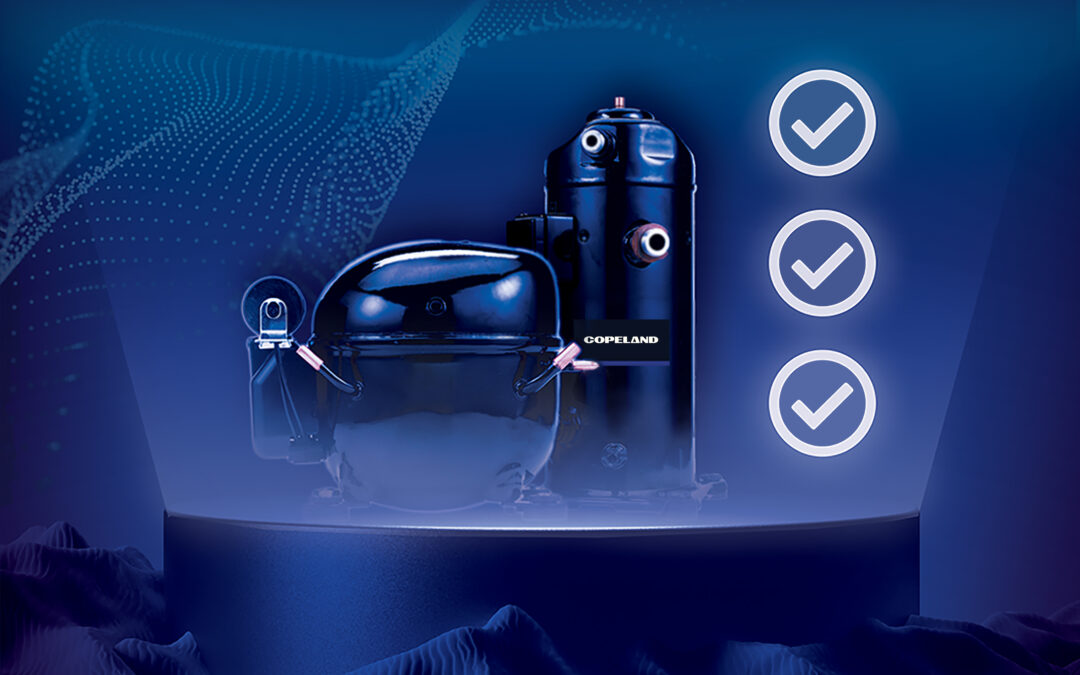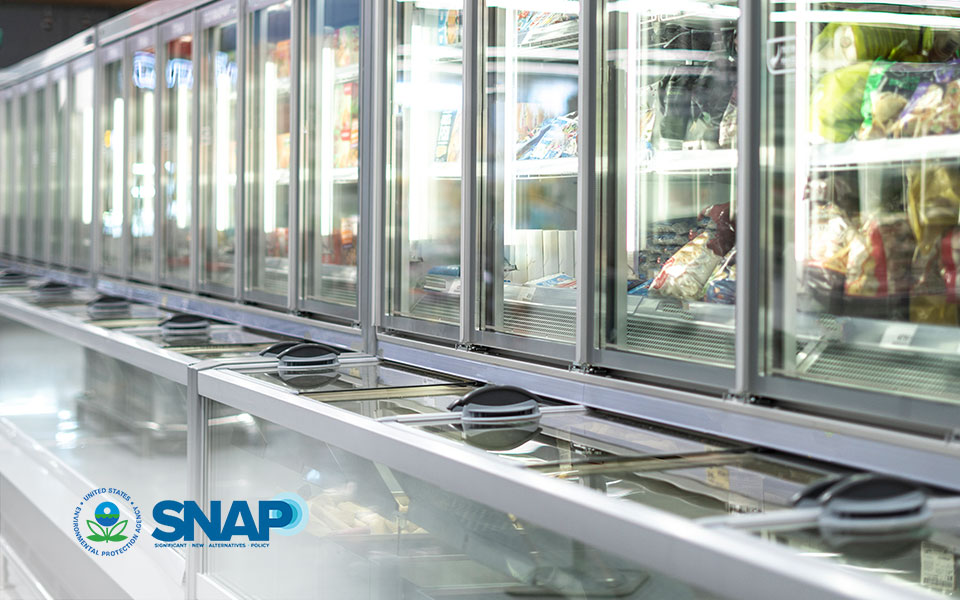CO2 refrigeration fundamentals: Properties of R-744

*On June 1, 2023 Emerson’s Climate Technologies business became a new standalone company – Copeland. Though our name has changed, we are building on more than a century of HVACR innovation and industry leadership, and Copeland continues to offer the same products, industry stewardship, and learning opportunities you’ve grown to trust. Information found on this webpage posted before June 1, 2023 may contain our old name or branding, but you can be at ease knowing it was created with the knowledge and expertise of Copeland.
The use of CO2 (or R-744) in commercial refrigeration is expected to rise significantly over the next several years. With a global warming potential (GWP) of 1 and zero ozone depletion potential (GWP), CO2 can help food retailers to meet their sustainability goals and comply with emerging regulations. Because the fundamentals of CO2 refrigeration are quite different from traditional hydrofluorocarbon (HFC)-based systems, Emerson has compiled a video series that seeks to address common questions and misperceptions about them. As a companion to the CO2 Chats Series — which features candid interviews with me and Derek Langenkamp, Emerson’s product manager of semi-hermetic and CO2 — we’re launching a five-part CO2 Refrigeration Fundamentals blog series. In this first installment, we’ll look at R-744’s unique properties and how it differs from HFC refrigerants.

What is CO2’s critical point?
Among its many distinguishing characteristics, R-744 has a low critical point of 87.8 °F. Although that may not seem like a low temperature, it is from a refrigeration perspective. What this means is that when the temperature rises above that 87.8 °F, the refrigerant enters a supercritical fluid phase. In this supercritical zone, its pressure and temperature relationships no longer match — where each can rise and fall independently of each other. R-744 is at saturation when it is below the critical point, which is referred to as subcritical mode; above 87.8 °F, R-744 is no longer at saturation and operates in transcritical mode.
Does CO2 have high operating pressures?
CO2 system operating pressures are significantly higher than those with HFCs such as R-404A or even R-410A. Because of this, service technicians often have reservations when working on CO2 transcritical booster systems. Understanding where those pressures occur within a system can give contractors a greater comfort level. Medium-temperature (MT) compressors discharge onto the roof at the gas cooler. Thus, on a 95 °F ambient day, that pressure will be around 1,400 psi typically within a stainless-steel discharge line coming back into the building.
Once in the building, this high-pressure refrigerant goes through an expansion valve into a receiver flash tank, reducing the pressure to around 550 lbs. It is then carried through a liquid line to an MT evaporator, which at about 23 °F is 425 psi. The low-temperature (LT) evaporator operates near -20 °F and will be at an even more reduced pressure of 200 psi. Although system pressures are higher than what most technicians are accustomed to, proper training and tools should relieve concerns some have related to CO2’s high operating pressures.
What is CO2’s triple point?
CO2’s triple point is the point at which the refrigerant’s gas, liquid and solid state coexist — which occurs at -69.8 °F and 60.4 psi. Since -69.8 °F is well outside of normal operating ranges, you might wonder why triple point is a consideration. If the proper steps and cautions are not taken, a CO2 system can reach 60.4 psi or lower. When this occurs, R-744 is likely to turn into dry ice. Once dry ice forms in a refrigeration system, it stops refrigerant flow and may cause a variety of potential problems.
What are the differences between CO2 and HFCs?
R-744 has other unique performance and operating characteristics that differentiate it from HFCs and dictate system design. It has higher density than a typical HFC refrigerant, which translates into the use of smaller compressors. However, the motor is similar in size since the work being done is approximately the same. CO2’s higher density means that smaller pipe diameters can be used, especially on the suction side of the system. Due to its high pressures, system components need to be rated to tolerate a higher maximum pressure rating.
For more information on any of CO2’s unique properties, please view the companion topic in our CO2 Chats video series. The next installment of the CO2 Refrigeration Fundamentals blog series will focus on servicing tips. To learn more about Emerson’s comprehensive CO2 products and capabilities, please visit Climate.Emerson.com/CO2Solutions.

A2L refrigerant regulation updates: what you need to know today
by Jennifer Butsch | Efficiency & Refrigerant Regulations
Preparing for the approval and safe use of A2Ls in commercial refrigeration applications The move...

Address Efficiency Mandates with Compression Technologies
by Joe Summers | Efficiency & Refrigerant Regulations
Strategies for complying with DOE and ENERGY STAR® in self-contained and remote condensing units...

EPA SNAP Rule 26 Approves, Modifies Use Conditions for A2L and A3 Refrigerants
by Jennifer Butsch | Efficiency & Refrigerant Regulations
On May 28, the Environmental Protection Agency (EPA) pre-published its Significant New...
The post CO2 Refrigeration Fundamentals: Properties of R-744 appeared first on Copeland.